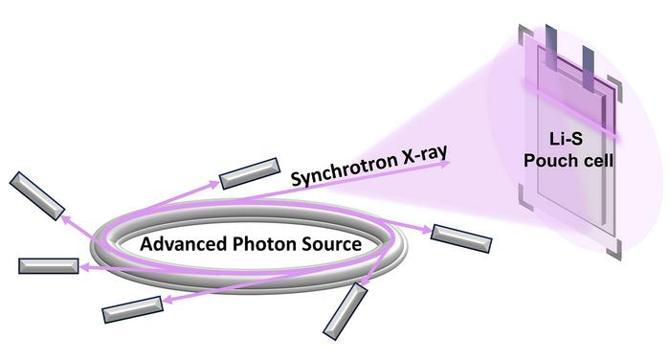Bioengineer
1w
21

Image Credit: Bioengineer
Unleashing the Power of Lithium-Sulfur Batteries: A Breakthrough in Energy Storage
- Researchers at the U.S. Department of Energy’s Argonne National Laboratory are working on developing a novel additive for the electrolyte in Lithium-sulfur (Li-S) batteries. By improving the chemical interactions in the battery, this chemical aims to solve critical problems concerning the migration of polysulfide ions, which degrade battery performance over time. Traditional Li-S batteries use lithium metal for their anode and sulfur for their cathode. This electrode combination offers substantial advantages over lithium-ion batteries, including two to three times higher energy density and lower costs, as the sulfur is abundant in nature.
- One significant disadvantage is the short cycle life caused by the migration of polysulfide ions, which leads to performance degradation over time. Researchers at Argonne National Laboratory are pioneering the development of a novel additive for the electrolyte in Li-S batteries. This new additive aims to solve the critical problems related to polysulfide movement, bolstering the overall performance and durability of Li-S batteries.
- One particularly promising approach is the incorporation of specialized additives into the electrolyte. Guiliang Xu and his team at Argonne are creating a new class of additives that appear to bolster, rather than undermine, battery performance. The team’s investigations leveraged the unparalleled capabilities of the Advanced Photon Source (APS) at Argonne National Laboratory, utilizing its sophisticated X-ray diffraction, absorption spectroscopy, and fluorescence microscopy techniques.
- The additives called Lewis acid additives react with polysulfide compounds, leading to the formation of a protective film over the electrodes, which is instrumental in mitigating the shuttling effect. Implementing these additive technologies has proved effective in suppressing undesired polysulfide dynamics, resulting in a stable architecture for lithium-ion transport.
- The implications of these findings are far-reaching. They not only underpin the feasibility of commercializing Li-S batteries but also herald a new era in energy storage technologies. The researchers believe that through continued optimization and refinement of sulfur electrodes in conjunction with their electrolyte advancements, Li-S batteries could achieve even greater energy densities and enhanced overall performance metrics.
- Lithium metal's propensity for reactivity presents safety issues within battery applications. Xu and his team are developing modern electrolyte formulations capable of stabilizing lithium metal while simultaneously reducing flammability, thus enhancing the safety profile of Li-S batteries. This could ultimately pave the way for integrating Li-S battery technologies into a variety of applications, driving innovation in electric vehicles, renewable energy storage.
- Argonne National Laboratory is pioneering solutions to one of the most pressing challenges of our time: the need for sustainable, efficient, and safer energy storage systems. As advancements continue to unfold, the battery industry is likely on the cusp of revolution, creating opportunities for energy solutions that impact both future technologies and society at large.
- With ongoing trials and developments, the expectation is that breakthroughs in Li-S battery technologies will emerge as critical advancements paving a path toward cleaner energy systems. As these revolutionary solutions progress from laboratories to real-world applications, they will play a pivotal role in shaping the energy landscape of the future.
- The findings have been accepted for publication in the journal Joule, illustrating the growing prominence and attractiveness of these findings in the scientific community.
- Li-S batteries could pave the way for cleaner and more efficient batteries for a variety of applications as researchers find solutions to challenges associated with current battery technologies.
- The potential for Li-S batteries to drive a significant shift in energy storage cannot be overstated, offering a glimpse into a cleaner, more efficient energy future.
Read Full Article
1 Like
For uninterrupted reading, download the app